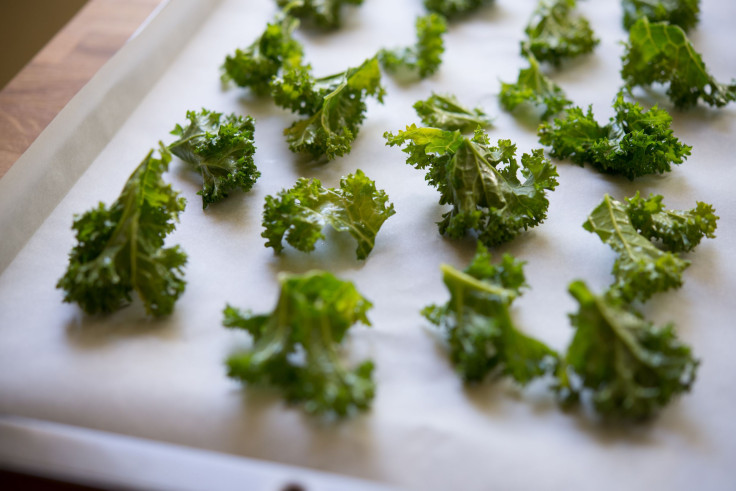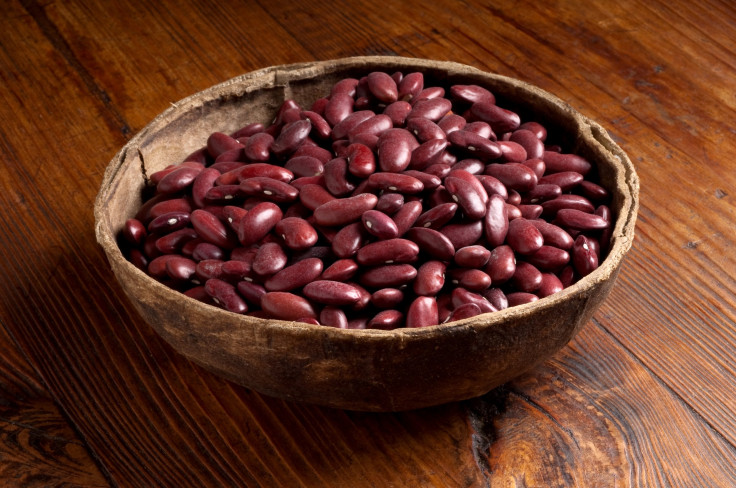5 Healthy Foods That Turn Deadly If Prepared Incorrectly

“Cooking is like love; it should be entered into with abandon or not at all,” said Harriet Van Horne, the 20th century American journalist, when she so eloquently highlighted the importance of taking time to prepare a meal. In an age where Americans spend an increasingly smaller amount of time preparing their food, this beautiful art is quickly falling out of fashion. What many do not realize, however, is that how you cook a dish doesn’t only enhance its flavor, it might just save your health. Here’s a rundown on foods where preparation may be the difference between a full belly and a trip to the ER.
1.Chia Seeds- Must Be Soaked Before Consumption
In case you haven’t heard, Chia seeds are the newest superfood, and deservingly so. According to Medical Daily, a simple 2-teaspoon serving packs only 117 calories, but also delivers an impressive 4 grams of protein, 8 grams of fiber, and an impressive amount of omega-3s for a healthy heart. With all these health benefits, it would seem crazy not to squeeze these little guys into your diet somehow. Unfortunately, what some don’t realize is, when it comes to chia seeds, there is a right and a seriously wrong way to eat them.
The seeds are able to absorb 27 times their dry weight in water. As reported by Time, when this happens the seeds congeal into a thickened gel-like mass, which can become lodged in the consumer’s esophagus. Dr. Rebecca Rawl, a gastroenterologist who has worked with a patient suffering from such a problem explains that although it was the first time she’s ever encountered such a case, she feels it won’t be the last time. “The popularity of chia seeds is growing, and I think this will come up more frequently,” Rawl told Time.
The proper way to eat chia seeds is to allow them to expand fully in liquid before eating or drinking them. If this is done correctly, then eating these super-seeds shouldn’t be any problem.

2. Kale- Best Eaten Cooked And In Moderation
Although it may sound like the secret love child of Katniss and Gale from The Hunger Games (if only), kale is actually a super healthy food from the same family as broccoli and Brussels sprouts. When steamed, the vegetable can provide consumers with serious cholesterol-lowering benefits. As reported by Medical Daily, kale, like its other cruciferous cousins, is packed with antioxidants, cardiovascular supports, anti-inflammatory, and cancer-fighting benefits. That is when it's consumed in moderation.
Jennifer Berman, a journalist for The New York Times, wrote earlier this year of how daily diets of raw kale health shakes lead her to develop hypothyroidism. Also known as an underactive thyroid, this is a condition where the thyroid gland doesn’t produce enough of certain hormones, which can result in a slowed metabolism, joint pain, infertility, and heart disease. Although the condition is usually found in women aged 60 and older, the goitrogenic properties of kale, which contribute to the enlarged thyroid, can caused the condition in otherwise healthy young women.
Cooking Kale won’t completely get rid of these goitrogenic properties, but it will help to reduce them. Deirdre Orceyre, a naturopathic physician at the Center for Integrative Medicine at the George Washington University Medical Center, told The Washington Post that on top of containing the sometimes thyroid-suppressing compound, uncooked kale can also “be hard on the digestive system,” Orceyre recommends not eating the vegetable in its raw form more than once or twice a week, but added that you can eat cooked kale as much as you'd like.
Unfortunately, there is a minor downside to this only eating cooked kale. “Some vitamins in dark leafy greens are not heat-resistant and can become damaged,” explained Marissa Puleo, a licensed registered dietician, to Medical Daily. Rather than worrying how you prepare your kale, Puleo offered a rule of thumb that rings true for all foods: “Eating any item in excessive amount just isn’t suggested because you can get deficiencies from other vitamins you may ignore. I would say to not so much focus on any one diet or any one fad. Just eat in general a healthy, balanced diet. Diets tend to leave out important nutrients and could be doing the body more harm than good."
3. Red Kidney Beans- Must Be Soaked Before Preparing
Raw-food-ism is slowly gaining popularity around the world. According Medical News Today, the raw food diet is built around the idea that consuming mainly uncooked foods will help you to achieve significant weight loss and enhance the body’s ability to prevent and fight disease. This is because essential enzymes in food are destroyed in hot temperatures. While there is scientific data supporting the claims of raw-foodists, a meal consisting of raw red kidney beans may be the last meal an individual will ever have.
If you come across raw red kidney beans for sale at an organic shop, please prepare them correctly before consumption. Naturally, red kidney beans contain toxins called lectins. This chemical inhibits the stomach cells' ability to self-repair following natural stresses. On a microbiological level, this results in the death of the cells, but to those who consume the raw bean, it feels similar to an intense stomach ache. As little as five raw beans can cause nausea and vomiting.
In order to be safe for consumption, these beans must first be soaked in water for at least five hours, Cooking Light reported.

4. Rhubarb- Must Remove Leaves Before Cooking
If you have any decent taste in dessert, you’ll know that nothing beats a good strawberry rhubarb pie. However, if you’re looking to bake one from ingredients in your own garden, it’s important you learn how to properly prepare the rhubarb for cooking. There’s a reason rhubarb in the supermarkets comes leafless. The leaves are poisonous. According to Medline Plus, they contain anthraquinone glycosides and oxalic acid. While Cooking Light reports that it would take an abnormally large amount of rhubarb leaves to kill a person (a 140-pound person would have to consume 10 pounds of leaves), even in small amounts the leaves can make a person ill. Symptoms of rhubarb stalk poisoning include: difficulty breathing, burning in the mouth, diarrhea, eye pain, seizures, and vomiting.
You must remove rhubard leaves before preparing the vegatable in your dish.
5. Ackee- Must Wait Until Fruit Is Fully Ripe
The ackee is the national fruit of Jamaica, and anyone who has eaten Jamaican cuisine is bound to be familiar with the famous Ackee and Saltfish. The unripened ackee fruit is known for a much more sinister reason: being one of the most deadly food in the world. Unripe fruit contains hypoglycin and consumption of unripe fruit causes the rightly named Jamaican Vomiting Sickness. JVS, also known as toxic hypoglycemic syndrome, is associated with severe disturbances in the carbohydrate and lipid metabolism. Symptoms of this illness are abdominal pain, depleting of hepatic glycogen, hypoglycemia, aciduria, coma, and, unfortunately, in the most severe cases, death.
When eating ackee, one must wait until the fruit’s protective pods turn red and open naturally, Time reported. Once open, the only edible section is the yellow arilli. This is surrounded by signature black seeds, which are always toxic, regardless of the fruit’s ripeness.




























